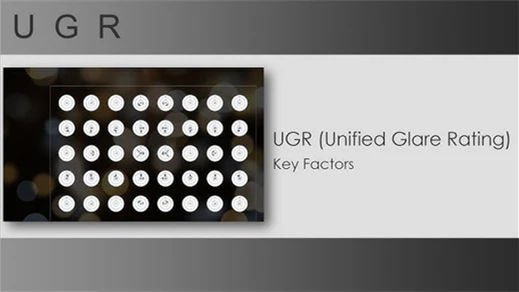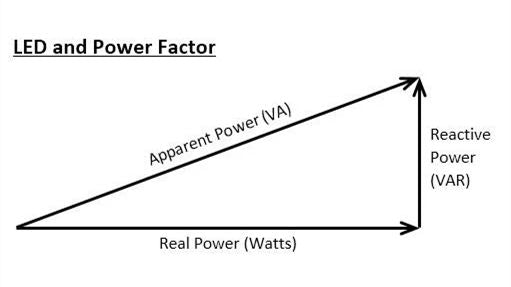UGR is a key metric that determines the level of discomfort glare produced by a lighting installation, impacting the visual comfort and productivity of the occupants in a space. Understanding UGR and its implications is essential for creating well-lit environments that are both functional and comfortable. This article will delve into the significance of UGR, explain what it is, outline the common UGR levels for various environments, and provide guidance on how to choose the right LED light based on UGR levels.
What is Unified Glare Rating?
Unified Glare Rating (UGR) is a metric developed by the International Commission on Illumination (CIE) to quantify the level of discomfort glare produced by lighting installations. This rating helps in assessing the impact of light sources on human vision, ensuring that the illumination provided in a space is both effective and comfortable. UGR values range from 10 to 30, where lower values indicate less glare and higher values suggest greater glare. The formula for calculating UGR considers several factors, including the luminance of the light sources, the background luminance, the solid angle of the light sources from the observer’s viewpoint, and the position index of the light sources.

Common UGR Levels in Different Environments
Different environments and activities require varying levels of glare control to ensure comfort and productivity. Here are some common UGR levels recommended for various settings:
-
Offices and Educational Spaces (UGR < 19):
- For general office lighting, conference rooms, and classrooms, a UGR of less than 19 is ideal. This level helps reduce eye strain during prolonged periods of concentration and reading.
-
Industrial and Technical Spaces (UGR < 22):
- Workshops, factories, and laboratories often require a UGR of less than 22. This allows for detailed tasks to be performed safely and accurately without excessive glare causing distractions or visual discomfort.
-
Public Spaces and Corridors (UGR < 25):
- In areas such as lobbies, hallways, and waiting areas, a UGR of less than 25 is sufficient. The focus here is more on providing general illumination without causing discomfort to transient occupants.
-
Retail and Display Areas (UGR < 16):
- For retail stores and galleries where the focus is on highlighting products or artworks, a UGR of less than 16 is recommended. This level ensures that the displayed items are well-lit without causing glare that could deter customers or viewers.
-
Control Rooms and Specialized Environments (UGR < 13):
- In environments where precision and concentration are critical, such as control rooms or certain medical facilities, a UGR of less than 13 is necessary. This helps in maintaining optimal visibility and minimizing eye fatigue.

How to Choose the Right LED Light Based on UGR Levels
When selecting LED lighting for a specific application, it’s crucial to consider the UGR to ensure both functionality and comfort. Here’s a step-by-step guide to choosing the right LED light based on UGR levels:
-
Identify the Purpose of the Space:
- Determine the primary activities that will take place in the space. Different tasks and environments will have varying requirements for glare control.
-
Refer to Recommended UGR Levels:
- Use the guidelines for common UGR levels in different environments to find the appropriate range for your specific application. This ensures that the chosen lighting meets the necessary standards for visual comfort.
-
Check Manufacturer Specifications:
- LED light manufacturers typically provide UGR values for their products. Look for these specifications to ensure that the selected lights fall within the desired UGR range for your application.
-
Consider the Layout and Positioning:
- The arrangement of lighting fixtures and their positioning relative to the occupants’ line of sight can significantly impact the UGR. Proper planning and installation can help achieve the desired UGR level.
-
Perform On-Site Testing:
- Before finalizing the lighting installation, conduct on-site testing to measure the actual UGR in the environment. This helps in verifying that the chosen lights provide the expected level of comfort and glare control.
-
Seek Professional Guidance:
- If unsure, consult with lighting professionals or engineers who can provide expert advice and calculations to ensure optimal lighting design and UGR levels.
Conclusion
Choosing the right LED light involves more than just selecting a product with the highest brightness or the longest lifespan. It’s about creating an environment where people can work, learn, and live comfortably. UGR plays a vital role in this process, helping to ensure that lighting solutions contribute positively to the user experience. Whether it’s for an office, a factory, a public space, or a retail store, considering UGR can make a significant difference in the quality of lighting and, consequently, the quality of life for those who use the space. By prioritizing UGR in your lighting choices, you can achieve a harmonious balance between efficiency, functionality, and comfort.


































Leave a comment
This site is protected by hCaptcha and the hCaptcha Privacy Policy and Terms of Service apply.